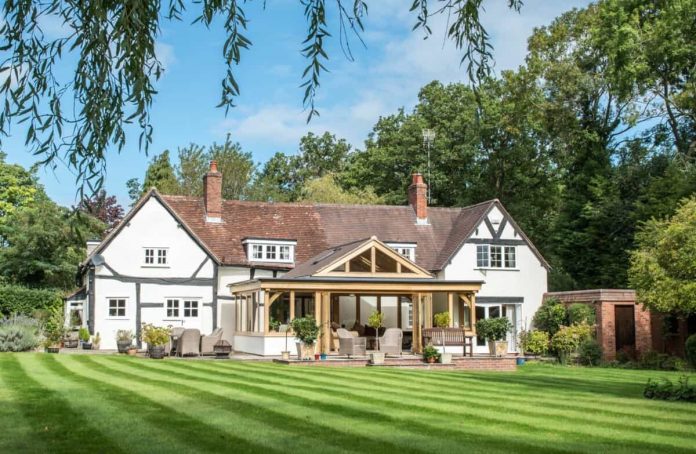Karen Bell, creative director at David Salisbury, discusses why the listed building planning permission process needs to change and explores the challenges involved
Listed buildings are not just stately homes, mansions, castles, or other grand, publicly owned buildings, but people’s homes too. In fact, the UK has over 450,000 listed buildings, however making changes – from a simple window upgrade to adding an extension – is unnecessarily complicated and lengthy.
When seeking listed building planning permission, advice is inconsistent, guidelines are open to interpretation, and timeframes are extended and used inappropriately by local authorities.
These delays don’t only impact frustrated homeowners, they have a significant impact on the companies that work for them, as well as the wider construction industry, on which the overall economy is so reliant.
Therefore, a better understanding of the impact of these rejections and delays, along with more efficient cooperation, is needed to turn this situation around.
Inconsistent planning guidelines are at the root of many problems
Currently, the guidelines are very much open to interpretation, and naturally, this underpins all other problems with the existing process. A successful application or denial is often dependent on where you live, who your planning officer is and, crucially, how they are interpreting these guidelines.
A house at one end of a road, for example, could request planning permission for an extension identical to one at the other end of the road, yet still, be rejected. Similarly, a project that one planning officer or local council deems compliant, might be turned down in a neighbouring borough or another region.
The first step towards reforming the listed building planning permission process surely has to be working towards a more concrete set of rules, therefore.
Planning officer contracts need to be handled differently
Another key problem with the existing system is that it’s quite commonplace for planning officers to be on short term contracts with local councils. The issue with this is that homeowners may spend months liaising with one individual who may be in agreement with the proposed changes, but by the time they have submitted detailed plans, the replacement officer making the final decision may express a different opinion.
Employing more planning officers on longer-term contracts or even just putting procedures in place to improve the handover process would ensure less wasted time for all parties.
After all, the time invested by multiple parties, from designers, manufacturers, architects, builders, electricians, is money lost for those companies.

Calling for more transparency over planning timelines, denials and extensions
At present, there’s a statutory requirement that councils must reach a decision on permission within eight weeks of an application being submitted, and they are judged on these timeframes. What frequently happens, therefore, is that local authorities will often request an extension just prior to this date; not its intended purpose.
Not only does this delay projects, but it also disguises the problem. A more accurate view of the average application times would surely go a long way to prioritising the issue.
Moreover, it’s time for planning denials and extensions to stop being used as a way to manage workload. It’s a problem that’s been increasing since the pandemic began, made all the more frustrating by the fact that measures were taken to ensure that lockdowns did not impact listed building planning permission decisions. Clearly, this has not been the case.
We need stricter rules around what constitutes good reasons for an application to be denied. This requires clear documentation and evidence, in order to see a decrease in the number of applications being unfairly rejected.
Cooperation and collaboration are needed to reform planning
As we’ve already touched upon, it’s not just homeowners who suffer from delays to planning projects, but every other party involved in the work. The designer or architect they are working with is also likely to have contracted an installer, builder or multiple trades services; businesses which may have needed to schedule time for the project weeks, if not months, in advance. Aside from the inconvenience caused, and the knock-on impact on their other projects, work that was initially affordable is now unrealistic.
What’s even more alarming is that these repeated delays and unfair denials can lead to beautiful historic buildings falling to ruin.
Of course, the listed building planning permission process (and beyond) was far from perfect, even before the pandemic, however, the quirks of the system seem to have been exacerbated over the past couple of years, with no signs of improvement. Planning officers are still refusing to carry out site visits, and working from home continues to be the norm, all in contradiction to current government guidelines.
In order to get a proper understanding of what needs to change, and the impact of delays, Historic England and local councils need to work together with listed building specialists on a clearer set of guidelines and more effective methods of enforcing them.















What a petty, naive and embittered view of the process. To suggest that listed buildings may fall into disrepair as a result of an application for a conservatory/sunroom being delayed is so full of self interest it is unbelievable. Yes Councils are under resourced, yes delays can be avoided but most listed buildings are unique which is why applications need to be considered on a case by case basis by professional and experienced conservation officers rather than applying a one size fits all approach. Otherwise there would be no need for architects and ‘creative directors’ and companies such as David Salisbury could supply off the shelf solutions for any listed building…..oh wait a minute!
Many of the points are highly relevant, not all petty as noted by Jim Broadley. However its pointless if it isn’t part of a govt lobbying campaign, as putting in here is speaking to the converted..
In my experience conservation officers or Historic advisors are not practically trained and have come from an Arts degree with no building experience. Pragmatic decisions are clouded by academic unrealistic thoughts which are usually not in the best interest of the listed building. I had a project that in one areas proposed to remove a 1970’s chipboard partition in a grade II hall, and the officer required a method statement and historic impact statement! To people outside the profession it makes us look like a bunch of fools! Coupled to this the heritage officer had not visited the property and had taken their decisions from an eastate agents web site. Karen your experience and comments are welcome to start the debate on what has become rather a silly procedure. If procedures are made too complex or unreliable, then people tend to take short cuts and bypass the system. This could take a line of causing more damage to our heritage. We need a conservation system that is pragmatic and staffed by people who have practical knowledge or experience. Years ago the conservation officer was an ex bricklayer, joiner or tradesperson who understood how buildings were put together and how many quirks they contained. Let the debate continue, because without it, we are probably going to cause more damage to more buildings and lose skilled companies.
This is a weird article. The thing that is important in understanding why listed building consent differs from normal planning permission is that extreme caution has to be exercised when consenting to something (such as an orangery or conservatory) that could adversely affect the heritage interest in the building. The listed building consent system is put in place to ensure that the minimum of harm comes to this finite, non-renewable heritage resource. It’s not there to make life easy for homeowners and developers. There are measures that can be taken to assist in navigating the process- for example enter into constructive dialogue with your friendly local conservation officer, take the advice of a built heritage consultant when developing proposals, and supply robust documentation with your listed building consent application. That way the decision making process is easier for the local authority. And by all means employ a builder and/or architect with practical knowledge of working with historic buildings- a good project team will see you through.